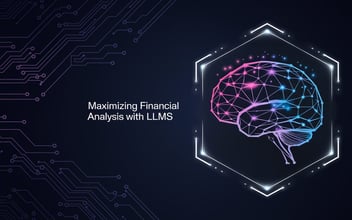Introduction
In today’s rapidly evolving financial landscape, staying ahead of the curve is no longer just about crunching numbers—it’s about leveraging advanced technologies to streamline workflows and enhance decision-making. Financial Large Language Models (FinLLMs) are now playing a transformative role, enabling financial analysts to dive deeper into data, track project histories, and optimize performance. This article explores the strategic application of FinLLMs, covering everything from version control to predictive analytics, and how these tools can revolutionize the way financial professionals approach their work.
Keeping Track of Project History
Analyzing project history is a crucial component of financial analysis. It helps analysts review past strategies, identify key drivers of success, and avoid potential pitfalls in future projects.
Key Benefits of Reviewing Project History:
Informed Future Strategies: Historical data can inform future decisions, helping analysts adapt to market changes and refine their investment strategies over time.
External Factor Correlation: Correlating project outcomes with external variables, such as market shifts or regulatory changes, helps analysts
identify risks and opportunities.
Post-project analysis also enables teams to document best practices and lessons learned, creating a valuable knowledge repository for future use.
Version Control and Commit Tracking in Financial Data
In financial analysis, ensuring that teams are working with the most up-to-date data is crucial. Commit tracking, which refers to documenting changes made to datasets or reports, plays a pivotal role here.
Advantages of Commit Tracking:
Collaborative Transparency: Clear commit messages make it easier for team members to understand why changes were made and how they fit into the broader analysis.
By adopting these practices, financial analysts can maintain both accuracy and agility in their work, ensuring timely and informed decisions.
Advanced FinLLM Techniques: Predictive Analytics and Benchmarking
FinLLMs are transforming how financial institutions approach predictive analytics and benchmarking. By using machine learning and LLM technology, financial analysts can improve predictions, optimize portfolios, and assess credit risks with greater precision.
Effective Techniques for Financial LLM Development:
Navigating Financial Data Repositories
As financial institutions build extensive data repositories, effective navigation is critical for maintaining efficiency.
Tips for Repository Navigation:
Metadata and Tagging Systems: Implementing metadata and tagging systems helps
classify financial files by key attributes, such as asset class or market conditions. This ensures that relevant data is quickly accessible for analysis.
Efficient Search Mechanisms: Robust search tools within repositories can save time and
improve workflow efficiency, ensuring that financial teams retrieve the information they need without delays.
Conclusion
As financial institutions continue to embrace digital transformation, FinLLMs are proving to be indispensable tools for
enhancing efficiency, accuracy, and strategic foresight. From tracking project history and maintaining data integrity through commit logs to navigating vast financial data repositories, these technologies empower analysts to make more informed and timely decisions. With predictive analytics and benchmarking capabilities, FinLLMs offer a pathway to future-proof financial operations, ensuring that institutions remain competitive in an increasingly data-driven world.
Facilitating AI Integration with Pacific Data Integrators (PDI)
Integrating Generative AI and Large Language Models (LLMs) into finance can seem daunting, but with Pacific Data Integrators (PDI), it becomes a streamlined and supported journey. Partnering with PDI ensures a seamless transition and enduring success, turning challenges into opportunities. Discover how PDI's tailored solutions can transform your business by consulting with our experts today.
You can book a consultation today by visiting us at PDI.
Posted by PDI Marketing Team
Pacific Data Integrators Offers Unique Data Solutions Leveraging AI/ML, Large Language Models (Open AI: GPT-4, Meta: Llama2, Databricks: Dolly), Cloud, Data Management and Analytics Technologies, Helping Leading Organizations Solve Their Critical Business Challenges, Drive Data Driven Insights, Improve Decision-Making, and Achieve Business Objectives.






